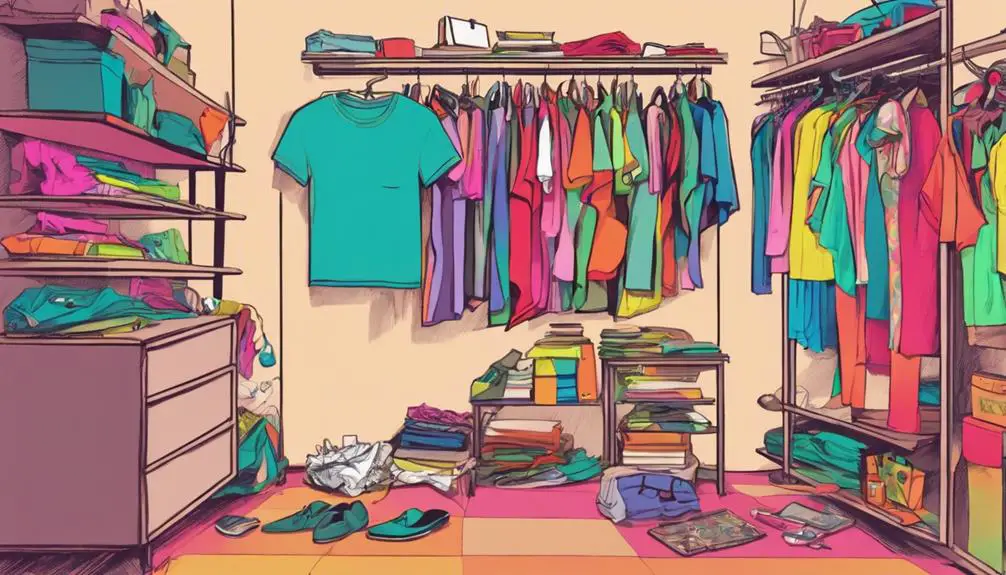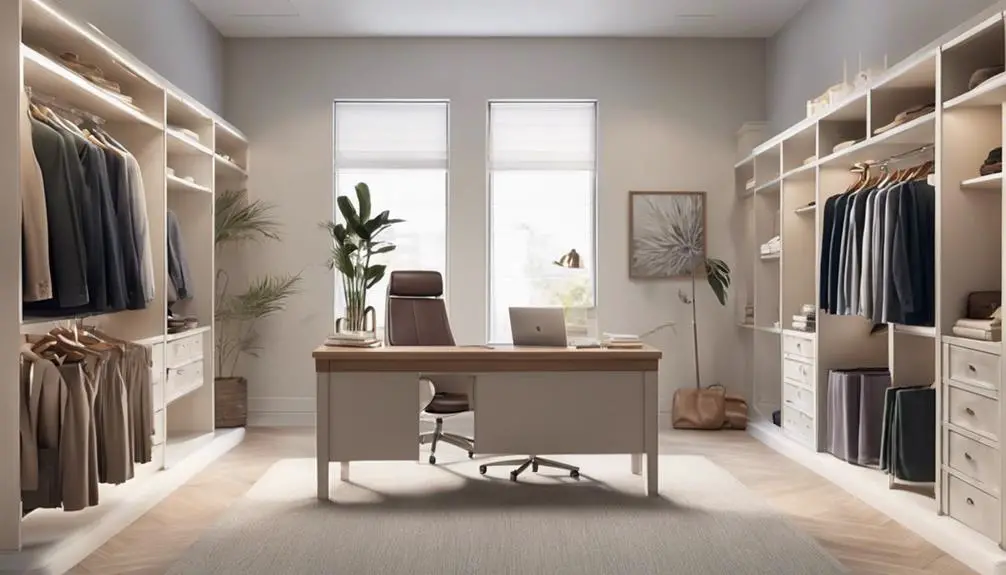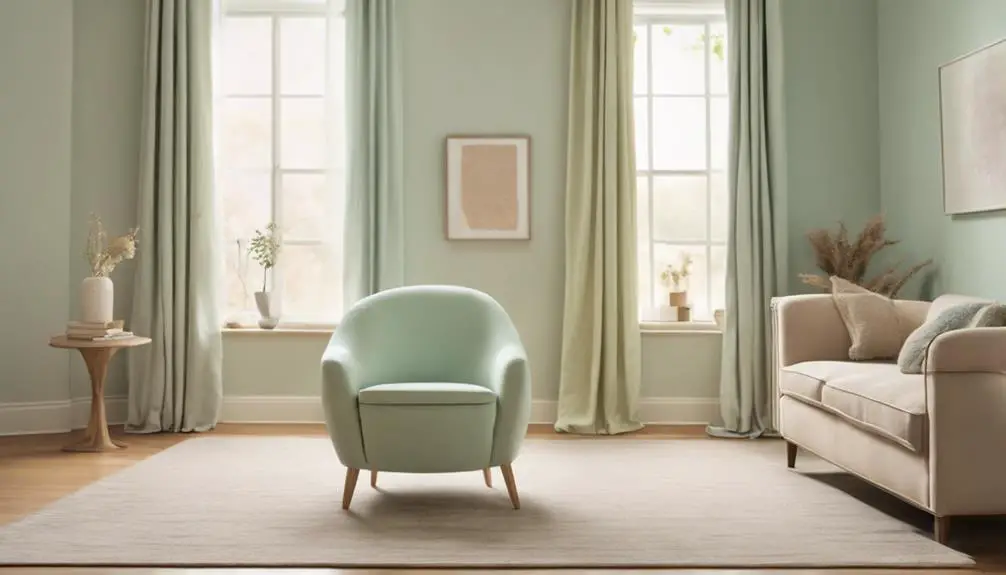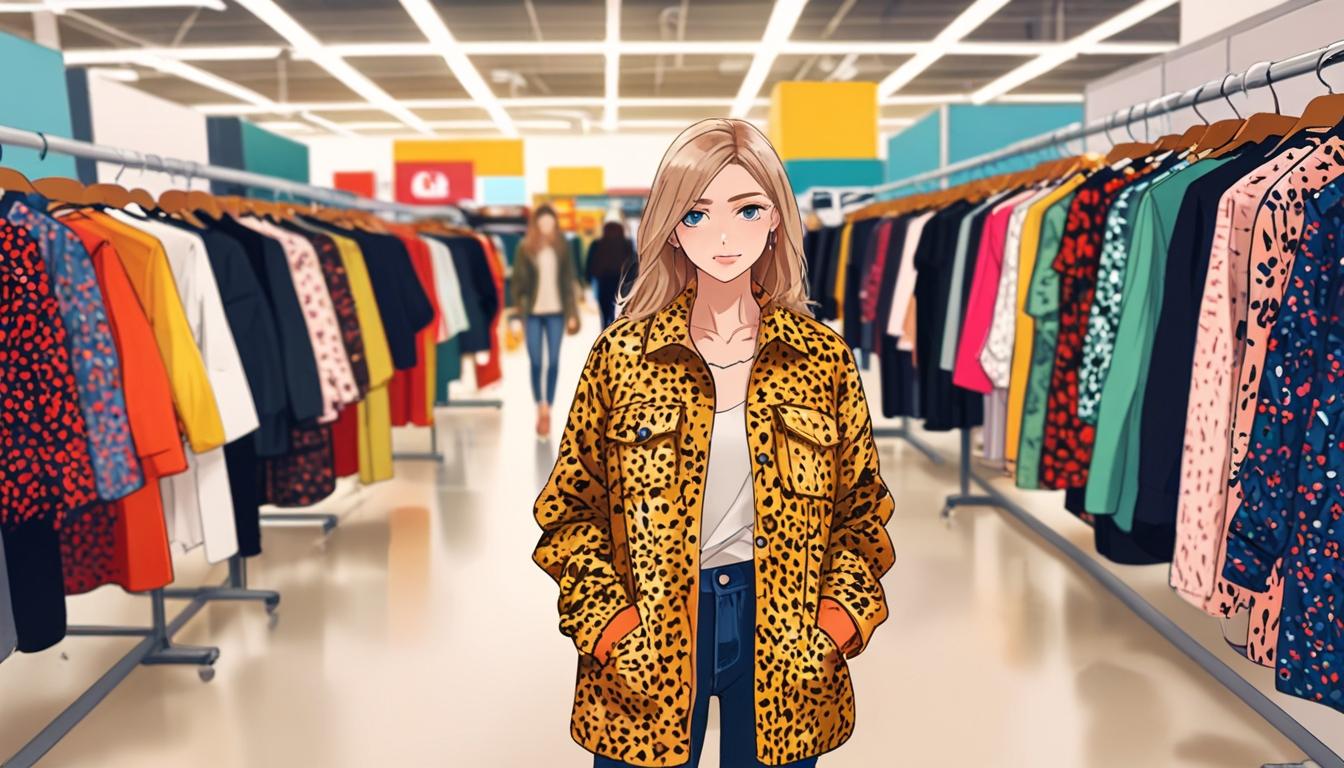Dressing as a therapist is all about striking that perfect balance! You want your clients to feel comfortable and secure, right? So, go for business casual—think well-fitted jeans with a smart top. Stick to soft, neutral colors; they create a calming vibe. Avoid anything too casual like sweatpants or loud prints; you want to keep the focus on your clients, not your outfit! Remember, neat attire boosts your credibility. And don't forget, your outfit can show off a hint of your personality—just keep it subtle! There's plenty more to explore on how to set the right tone through your wardrobe!
Importance of Professional Attire

Dressing professionally as a therapist not only enhances your credibility but also fosters trust with your clients. When you show up in business casual attire, you strike that perfect balance between looking professional and being approachable. This combo helps create an open environment where clients feel comfortable sharing their thoughts and feelings. Additionally, much like how a well-fitted vintage coat elevates one's appearance, your attire can greatly influence the therapeutic atmosphere. Opting for classic styles and neutral colors allows you to maintain a polished look while preserving the integrity of your appearance.
Choosing neutral colors for your therapist attire can work wonders, too. These calming shades keep the focus on your clients instead of your outfit. Plus, a clean and polished appearance shows that you respect the therapeutic process and are committed to professionalism.
Think about it: when you consistently wear neat clothes, it establishes a routine and predictability. Clients can concentrate on their issues without getting distracted by what you're wearing. And let's be honest, nobody wants to be that therapist who's too flashy or casual—right?
Balancing Comfort and Style
Finding the right balance between comfort and style is essential for therapists who want to create a welcoming atmosphere. You want to feel relaxed, but you also need to look professional. So, how do you pull this off? Start by choosing breathable fabrics that let you move freely. Flexible clothing makes all the difference during those long therapy sessions.
Think business casual! You can rock well-fitted jeans with a professional top, showcasing your personal style while staying polished. Stick to neutral colors to create a calming vibe—this helps your clients focus on what really matters, not on your outfit. And hey, simple accessories can tie everything together without being distracting.
Consistency is key, too. Dressing similarly each week helps clients feel secure, allowing them to concentrate on the therapeutic process. Just remember to avoid overly casual items like sweatpants or flip-flops. They might scream comfort, but they can also undermine your professionalism.
Attire to Avoid

In the domain of therapy, attire plays an essential role in setting the right tone for sessions. You want to create a space where clients feel safe and respected, so choosing what to wear is vital. First off, steer clear of overly casual items like sweatpants, shorts, and flip-flops. While comfort is key, you don't want your clients to feel uncomfortable or think you're not taking the session seriously.
Next, avoid loud prints and vibrant colors. They can be super distracting, so go for solid, neutral shades instead. You don't want your outfit to steal the spotlight! Also, skip clothing that's too tight or revealing. Low-cut tops and short skirts can shift focus away from the conversation, and that's not what you want.
When it comes to accessories, keep it simple. Noisy jewelry or excessive adornments can become a distraction too. Finally, make sure your clothes are neat and well-maintained. Missing buttons or stray pet hair? That's definitely attire to avoid. Remember, your outfit should help foster a positive therapeutic environment, not hinder it!
Client Comfort and Trust
Choosing the right attire as a therapist can greatly influence your client's comfort and trust. Imagine walking into a session and instantly feeling at ease because of what your therapist is wearing. That's the power of client comfort! Casual attire can create a relaxed atmosphere, making clients feel more open to share their thoughts. On the flip side, professional attire signals competence. When clients see you dressed well, it can boost their trust levels in your abilities.
But hey, don't go overboard! You want your therapist dress to reflect who you are while still being respectful of the therapeutic process. Avoiding distracting accessories or overly casual clothing shows you care about their experience. Can you picture yourself in a cozy sweater or a smart blazer? Finding that balance is key.
Consistency in Clothing Choices

Establishing consistency in your clothing choices can greatly enhance your clients' therapeutic experience. When clients come to see you, they want to focus on their mental health, not on what you're wearing. By sticking to a uniform style, you help create a sense of predictability and safety, which is essential for building that therapeutic alliance. Plus, it's comforting!
Think about it: when you wear similar outfits week to week, clients can feel a routine forming, reinforcing their sense of stability during therapy. Dark colors and simple, professional clothing can act as a "blank slate." This allows your clients to project their emotions without distractions from flashy prints or wild colors.
You might not realize it, but the consistency in clothing choices helps establish your personal brand too. Clients start to associate your style with trust and professionalism. So, why not make it easy for them? Choose clothes that make you feel comfortable while still looking professional. This way, you're not just a therapist; you're a reliable guide in their journey. Remember, it's about them, and your outfit can play a big part!
Adapting to Casual Environments
Creating a consistent wardrobe is important, but adapting your style for casual environments can also enhance your therapeutic practice. You want to dress entirely in a way that feels comfortable yet professional. So, how do you strike that balance? Start by following local business casual standards. Dark wash jeans can totally work, especially when paired with professional tops. They offer that casual side without looking sloppy! Additionally, consider incorporating unique vintage pieces into your wardrobe; these can evoke emotional value and foster a deeper appreciation for personal style, just like how tailoring vintage clothing extends its life cycle.
Don't forget about the fabric. Breathable materials are a must, especially if you're in a hot climate. You want to feel good while looking sharp. A neat appearance matters, so skip the flip-flops and shorts—they might not give off the best vibe.
Your outfit should also focus on client comfort. Think about wearing clothes that allow for easy movement; you might find yourself getting up and down often! And remember, your clients will appreciate a polished look. They'll feel more at ease knowing you take your appearance seriously. So, mix comfort with professionalism, and you'll not only look great but also create a welcoming environment for your clients. Isn't that the goal?
Color Choices and Psychology

When you step into your therapy session, the colors you wear can considerably influence the atmosphere and your client's experience. Think about it: color choices have real psychological effects! So, what should you wear? Soft blues and greens can help calm anxiety and promote relaxation, making clients feel at ease. On the flip side, if you want to energize the room, consider uplifting yellows or oranges. They can spark positive interactions and openness, which is great for discussions!
Neutral colors like black, grey, and navy are also solid options. They give off a professional vibe, creating a sense of stability and trustworthiness. But be careful with bright colors. While they can make the space feel welcoming, overly vibrant patterns might distract your clients. You want them focused on their feelings, not your flashy shirt!
Ultimately, your color choices can impact how clients perceive your competence and approachability. So, what colors are you gonna wear to your next therapy session? Remember, it's not just about looking good; it's about making your clients feel safe and supported too!
Frequently Asked Questions
What Are Therapists Supposed to Wear?
When considering what therapists are supposed to wear, focus on professional attire that aligns with client perception. Balance seasonal variations and personal style while respecting cultural considerations to create a welcoming and trustworthy environment.
What Colors to Wear as a Therapist?
You might think wild colors scream professionalism, but color psychology suggests calming hues like soft blues or greens enhance client perception. Choose seasonal choices wisely; your professional attire should promote tranquility, not chaos.
Is It Appropriate for a Therapist to Wear Shorts?
While shorts can be stylish, you should consider client comfort and cultural considerations. Aim for professional attire that aligns with seasonal appropriateness and your personal style to maintain a trusting therapeutic environment.
What Is the Dress Code for a Psychologist Female?
You might think casual outfits are acceptable, but professional attire is essential. Consider seasonal clothing and cultural influences. Your choices impact client perceptions, fostering trust and focus during sessions. Aim for a balanced, polished look.



